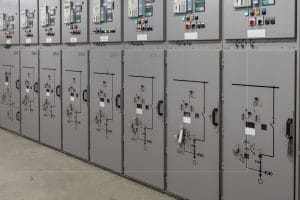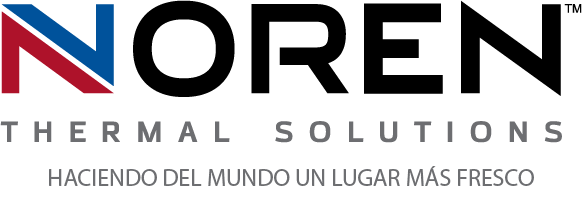 Electrical thermal management plays increasingly more and different roles in the daily operations of most companies. However, one of the oldest and most frequent roles is the cooling of electrical cabinets, control panels, and other enclosures that are essential to a company’s technology and operations. The cooling of electrical enclosures is so vital that the efficiency and quality of a company’s cooling solutions can largely impact its overall efficiency and level of production. Today, more companies utilize streamlined solutions such as heat exchangers that involve the rapid transfer of electrical waste heat, helping them enjoy more efficient and eco-friendly electrical cabinet cooling than traditional solutions have been able to provide.
Electrical thermal management plays increasingly more and different roles in the daily operations of most companies. However, one of the oldest and most frequent roles is the cooling of electrical cabinets, control panels, and other enclosures that are essential to a company’s technology and operations. The cooling of electrical enclosures is so vital that the efficiency and quality of a company’s cooling solutions can largely impact its overall efficiency and level of production. Today, more companies utilize streamlined solutions such as heat exchangers that involve the rapid transfer of electrical waste heat, helping them enjoy more efficient and eco-friendly electrical cabinet cooling than traditional solutions have been able to provide.
Traditional methods of cooling electrical cabinets
Cooling electrical cabinets and other enclosures has always been important for companies to maintain the proper operation of their technologies. Traditionally, however, companies had few choices for implementing efficient cabinet cooling, and had to rely on solutions such as air conditioning or compression to provide a consistent source of cold air. Circulating the cold air through the inside of an electrical enclosure prevents any electrical waste heat from accumulating into hazardous heat pockets. However, maintaining the source and circulation of cold air can also prove costly in many modern technological applications, and the equipment can have an increasingly negative environmental impact.
Greater cooling efficiency with heat exchangers
As the use of technology has taken over many different operations in nearly every industry, the need for efficient and effective electrical enclosure cooling has also grown. Implementing multiple high-performance cooling solutions can become cumbersome when those solutions are costly to maintain. However, with more efficient heat exchangers, the process of preventing electrical cabinets from overheating has become much more effective and manageable. Rather than utilizing chilled air, heat exchangers facilitate a continuous transfer of heat by utilizing an eco-friendly cooling fluid. The greater efficiency of transferring waste heat compared to circulating chilled air helps companies streamline their thermal management capabilities as well as reduce the costs and environmental impacts of electrical cooling.
Advanced cooling for more than electrical cabinets
The advancement of transferring electrical waste heat has had several significant implications for companies’ ability to cool vital electrical cabinets and other enclosures. It’s also had important impacts on other areas of industrial thermal management, from creating more efficient and eco-friendly processes such as wastewater treatment to helping companies streamline core processes such as plastic mold cooling. For more information about how electrical cabinet cooling and other thermal management processes have become more eco-friendly, call Noren Thermal Solutions in Taylor, TX, at 866-936-6736.







